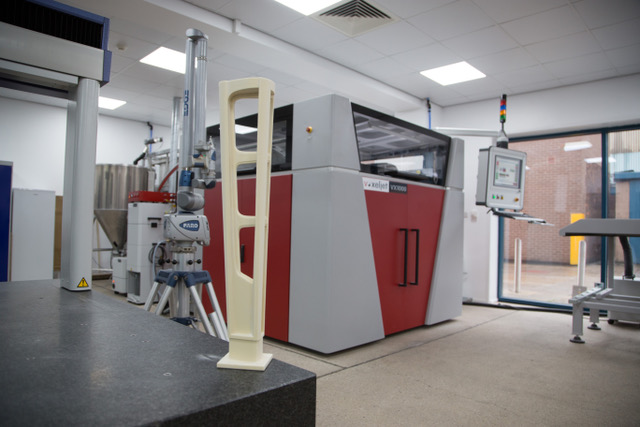William Cook Holdings is the UK’s largest manufacturer of steel castings, producing components for rail, energy, defense, and freight industries. The Precision Foundry, at one of the company’s sites in Sheffield, South Yorkshire, has now opened a specialist 3D printing facility for prototyping and end user parts.
In this article, 3D Printing Industry speak to Simon Alexander, managing director of the William Cook plant in Sheffield, to learn more about how 3D printing will be integrated into the company’s existing methods of precision manufacturing.

Keeping ahead of the game
The William Cook 3D printing facility is equipped with a Voxeljet VX1000 additive manufacturing machine that uses plastic and sand as the feedstock. The primary material to be produced by the machine is poly methyl methacrylate (PMM), an acrylic glass also known as Plexiglass or Perspex.
Alexander explains how the technology will be used to help maintain William Cook’s commercial advantage,
Commodity parts are routinely sourced from low-cost economies against which William Cook finds it difficult to compete on price. So to succeed, William Cook must concentrate on high added value, high integrity, high difficulty and niche products. These require the use of state of the art and cutting edge technologies supported by a highly skilled workforce.

3D printing the impossible
Alexander goes on to say how the technology will be used to unlock “the casting envelope”, enabling “larger and more complex geometries to be cast that were previously considered ‘un-castable’ by the lost wax process” – a method of making objects that uses a sacrificial material to make molds, the same process used to make the 2017 Academy Awards.
Using 3D printing to make the casts gives engineers more flexibility when designing the parts as it no longer relies only on 3 axis milling. Alexander explains,
This enables casting users and designers to focus on design for function (rather than design for manufacture), with no or fewer compromises and constraints than would be the case with traditional casting technology.
The fourth industrial revolution
William Cook’s Voxeljet VX1000 is one part of a $6m investment into the relocation of the Precision Foundry to Sheffield’s Parkway Avenue. This area of the city is home to sites from industrial giants like Rolls Royce, and the University of Sheffield’s advanced materials research facility in the reconfigurable Factory 2050.
The development of the Parkway area is due in part to the UK government’s funding of the “Northern Powerhouse” which seeks to reinvigorate the nation’s economy.
Looking to the future, Alexander adds,
At present, the cost in use of the technology broadly restricts its application to prototyping, product development and one-offs. As the technology develops it may become more of a production tool and this has the potential to open up new markets. It may even be that for legacy parts and small batch runs, clients elect not to lay down expensive ‘hard tooling’ and instead come to rely on the speed and convenience of 3D printed patterns as and when the demand for parts arises.
To stay up to date with 3D printing developments from the UK’s Northern Powerhouse sign up to the 3D Printing Industry newsletter, follow us on Twitter and like us on Facebook.
Also, make sure important innovations get the recognition they deserve by voting in the 1st Annual 3D Printing Industry Awards.
Featured image shows molten metal poured out of a crucible at the Sheffield foundry. Photo via William Cook



